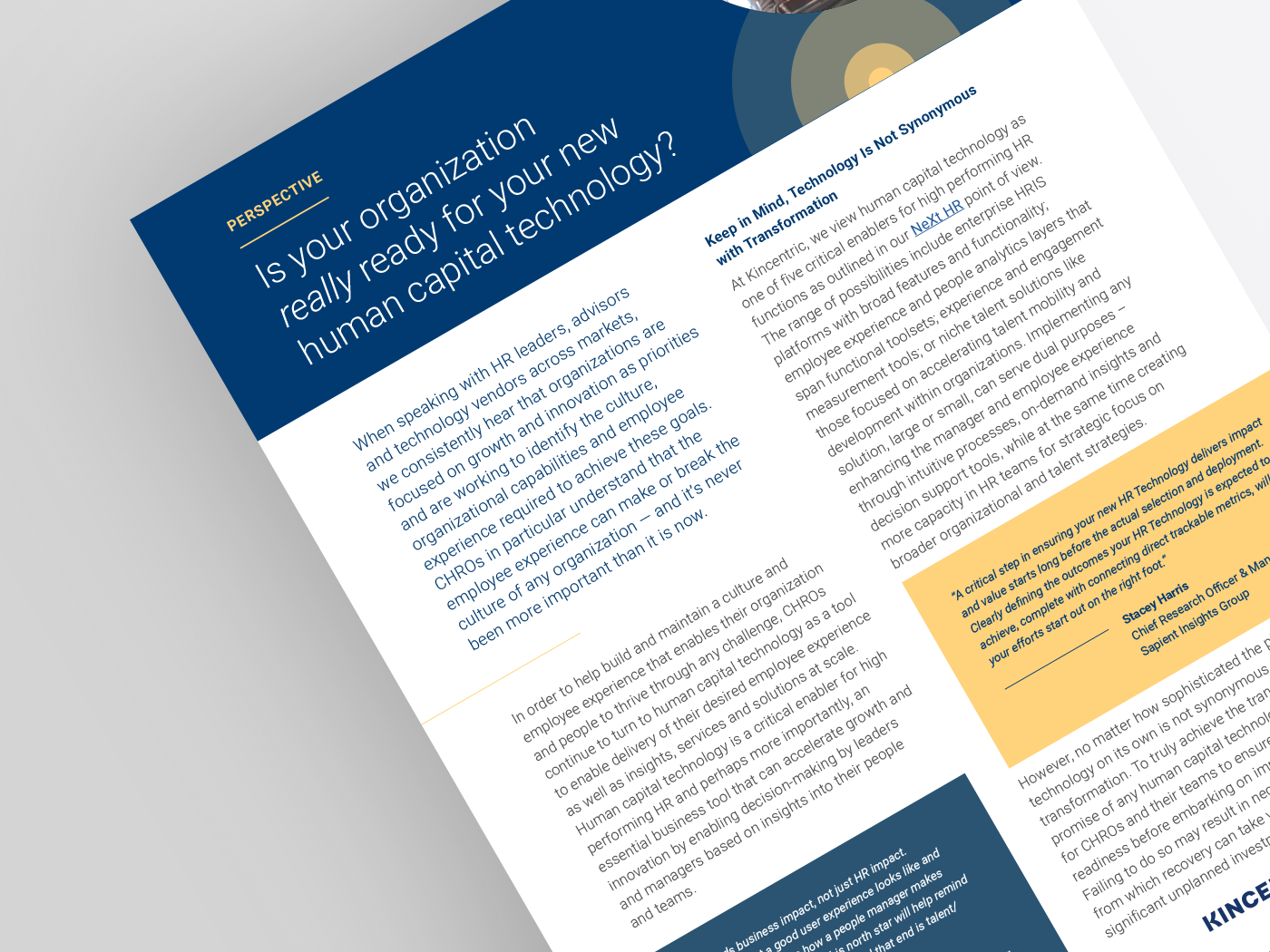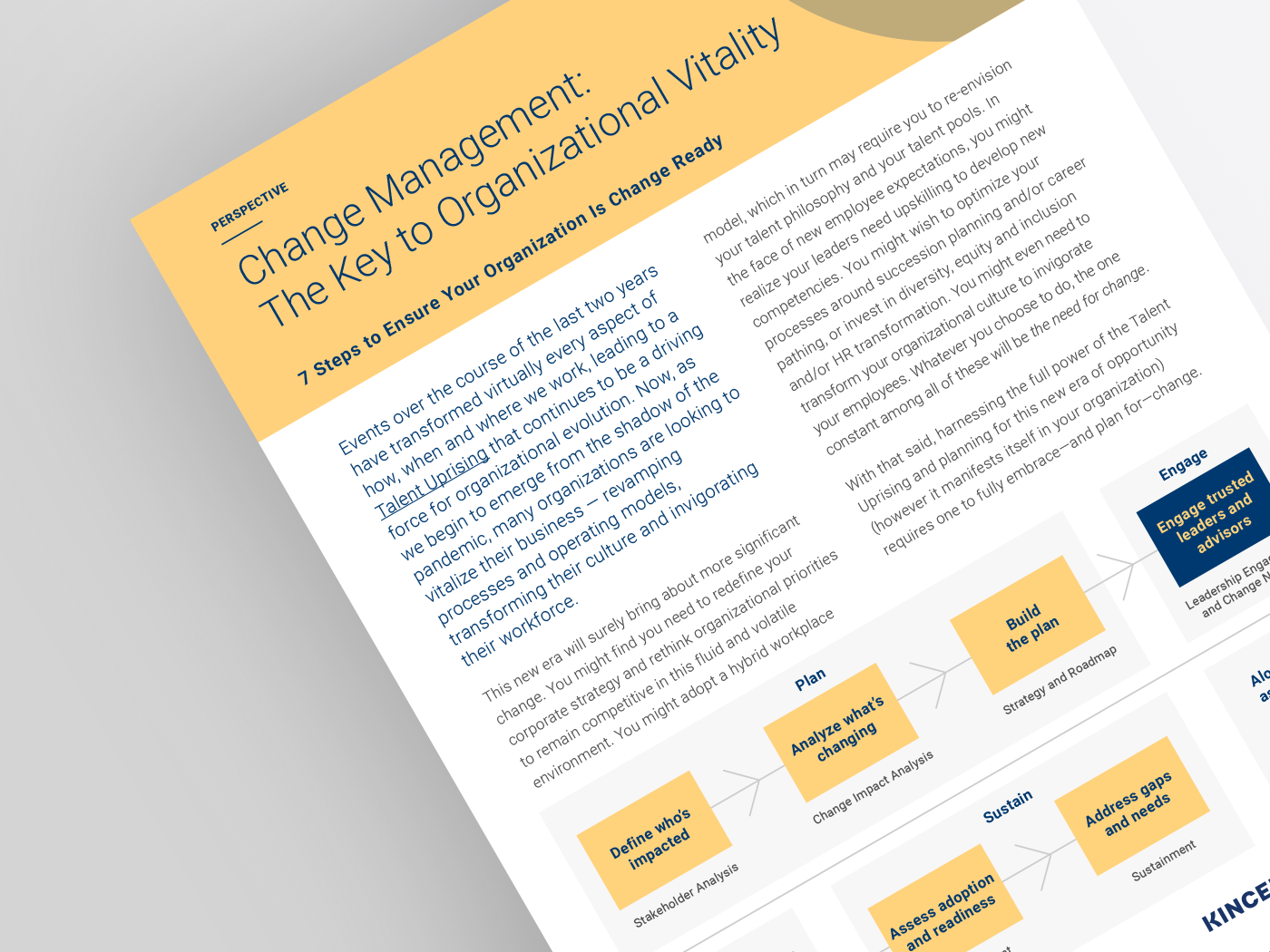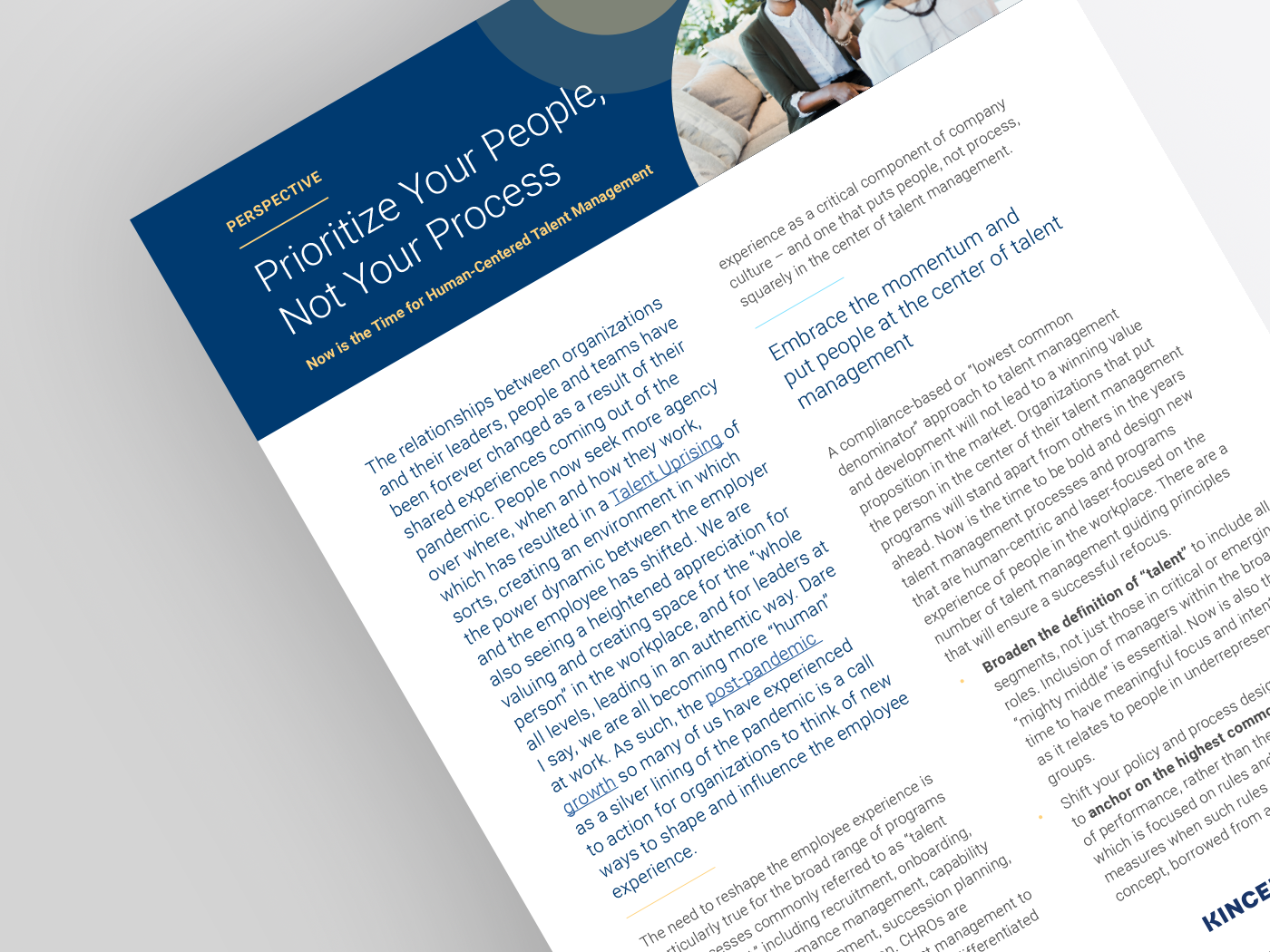
When speaking with HR leaders, advisors and technology vendors across markets, we consistently hear that organizations are focused on growth and innovation as priorities and are working to identify the culture, organizational capabilities and employee experience required to achieve these goals. CHROs in particular understand that the employee experience can make or break the culture of any organization — and it’s never been more important than it is now.
In order to help build and maintain a culture and employee experience that enables their organization and people to thrive through any challenge, CHROs continue to turn to human capital technology as a tool to enable delivery of their desired employee experience as well as insights, services and solutions at scale. Human capital technology is a critical enabler for high performing HR and perhaps more importantly, an essential business tool that can accelerate growth and innovation by enabling decision-making by leaders and managers based on insights into their people and teams.
|
“Push the team towards business impact, not just HR impact. Have your own POV on what a good user experience looks like and make sure your team can describe how a people manager makes better decisions because of the tech. This north star will help remind everyone that tech is a means to an end – and that end is talent/business outcomes.”
Paul Rubenstein |
At Kincentric, we view human capital technology as one of five critical enablers for high performing HR functions as outlined in our NeXt HR point of view. The range of possibilities include enterprise HRIS platforms with broad features and functionality; employee experience and people analytics layers that span functional toolsets; experience and engagement measurement tools; or niche talent solutions like those focused on accelerating talent mobility and development within organizations. Implementing any solution, large or small, can serve dual purposes – enhancing the manager and employee experience through intuitive processes, on-demand insights and decision support tools, while at the same time creating more capacity in HR teams for strategic focus on broader organizational and talent strategies.
|
“A critical step in ensuring your new HR Technology delivers impact and value starts long before the actual selection and deployment. Clearly defining the outcomes your HR Technology is expected to achieve, complete with connecting direct trackable metrics, will ensure your efforts start out on the right foot.”
Stacey Harris |
However, no matter how sophisticated the platform, technology on its own is not synonymous with transformation. To truly achieve the transformational promise of any human capital technology, it is critical for CHROs and their teams to ensure organizational readiness before embarking on implementation. Failing to do so may result in negative consequences from which recovery can take years and require significant unplanned investment.
In order to obtain a systemic and holistic view of organizational readiness, there are five critical factors we recommend CHROs and their stakeholders truly understand and address before embarking on the implementation of new technology.
1. Align Your HR Operating Model
It’s imperative that you ensure that your HR operating model — and accompanying service delivery and interaction models — are organized to support, measure and fully leverage new technology. The deployment of new HR tech likely represents an opportunity to rethink many of your HR roles and responsibilities as well as the way your stakeholders interact with your HR function. There are several questions you should ask before considering any major tech implementation. For example:
|
“As a CHRO, I need a solid foundation from which to launch a successful business-driven technology program and achieve the optimum results – the right plan, the right approach, at the right time, for each persona or segment in my business.”
Yolande Taylor |
2. Simplify HR Programs and Processes
Implementing new technology is an opportunity to enhance both the efficiency and effectiveness of HR and improve the employee experience, so it is imperative you review current programs, policies and processes to identify opportunities for harmonization and standardization, simplifying where possible
Be prepared to ask and answer the following questions:
|
“Readiness is first taking the time to find out what you need and identify gaps so you can plan most efficiently for implementation. It’s the time to start change management efforts as well as identify and mitigate the risks you anticipate with the right governance in place. If you don’t, your implementation is going to take longer, you’re going to miss your commitments, and you’re going to be met with more surprises.”
Ceres Ruzich |
3. Define and Align on Governance
Organizing for success is a critical component to ensure a positive outcome from your technology initiatives. Effective project governance goes well beyond having a project manager and a detailed project plan. Ensuring that all stakeholders clearly understand their roles and responsibilities – in particular between HR and IT, during implementation and beyond – will enable agile decision-making and escalated issue resolution at the appropriate levels. Some of the important questions that you should consider as you embark on your technology implementation include:
4. Rationalize Your Data Quality, Structure and Alignment
New technology represents an opportunity to address legacy data issues and to accelerate transparency via direct access to the system. Rather than “lifting and shifting” your existing data to a new system, make sure your current data structures (for example, your job architecture) make sense for your organization’s future needs, cleaning and rationalizing where possible and addressing current gaps or inaccuracies. Additionally, ask yourself the following questions:

|
“Research suggests that change initiatives are nearly twice as likely to fail due to organizational resistance, so CHROs need to intimately understand their organizational culture before beginning any implementation. Execution and change management strategies are more likely to achieve maximum adoption and efficiency when they’re designed with an organization’s unique culture and processes in mind.”
Karina Monesson |
5. Develop a Holistic Change Management Strategy and Plan
Effective change management is critical. Do not start implementation without a strategic view of what is required to manage – and maintain – the change that will accompany the rollout of a new people system or tool. All too often, change management is simply viewed as a series of communications and end-user trainings rather than a strategic intervention to drive the adoption and behavioral changes necessary to provide the return on your investment, and one of the first things to be cut when a project goes over budget. Resist those recommendations! Rather, ensure you have developed a broad and comprehensive change strategy that includes a robust communications plan, stakeholder engagement strategies, training and end user support structures as well as a way to measure your success. Additional considerations:

|
“Human Capital issues are at the center and in all cases either a catalyst or a bottleneck to driving organizational change at scale. In the most successful transformations we see relentless focus on the bigger picture and a willingness to experiment and innovate.”
Rohit Chennamaneni |
Human capital technology is a critical enabler for achieving – and sustaining – a high performing HR team that is focused on accelerating organizational performance while facilitating an engaging employee experience. More importantly, it can be a network of tools that can truly empower leaders, managers and employees to achieve their individual potential as well as strategic business priorities. But remember, deploying new technology can be a transformational event, but new technology in and of itself is not transformational. In our work helping client organizations select and implement new HR technology, we find the most successful deployments are led by CHROs who have a pulse on the organization’s readiness prior to jumping into implementation, so be sure you have done the hard but important work of assessing and addressing your own organizational readiness first. Doing so will accelerate not only your ability to maximize your investment in new technology but also your ability to support and enable your leaders, managers and colleagues in a differentiated and engaging way!
We are very grateful for the contributions from the various experts quoted in this Perspective.
We would like to thank Michael Martin for contributing his insights to this article.



Want the latest insights delivered straight to your mailbox?